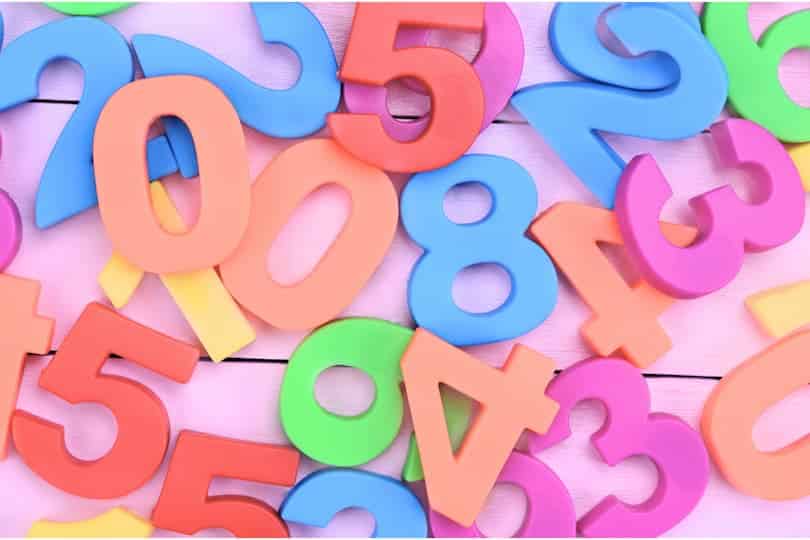Ce cours va vous apprendre à utiliser les nombres ordinaux, notion essentielle pour tout débutant en anglais, avec également ci-dessous un support pédagogique pdf à télécharger et imprimer.
Distinction entre nombre ordinaux et nombres cardinaux
Les nombres ordinaux en anglais sont utilisés pour indiquer l’ordre ou la position d’un élément dans une série ou une liste, alors que les nombres cardinaux sont utilisés pour décrire la quantité d’un objet.
L’équivalent du nombre ordinal en français est : “premier, second, troisième, etc…”
Ex :
I bought six apples at the market. > J’ai acheté six pommes au marché. (= nombre cardinal)
I need to make a second apple pie for dinner. > J’ai besoin de faire une seconde tarte aux pommes pour le dîner. (= nombre ordinal)
Structure et formation des nombres ordinaux
Les nombres ordinaux se forment normalement en ajoutant -th au nombre cardinal.
four > fourth (4th)
eleven > eleventh (11th)
Exception et irrégularités
Attention aux formes irrégulières suivantes :
one > first (1st)
two > second (2nd)
three > third (3rd)
five > fifth (5th)
eight > eighth (8th)
nine > ninth (9th)
twelve > twelfth (12th)
Ces exceptions s’appliquent également aux nombres ordinaux composés :
twenty-one > twenty-first (21st)
thirty-two > thirty-second (32nd)
sixty-three > sixty-third (63rd)
eighty-five > eighty-fifth (85th)
forty-eight > forty-eighth (48th)
ninety-nine > ninety-ninth (99th)
one hundred and twelve > one hundred and twelfth (12th)
Pour les multiples de 10, la terminaison -ty se transforme en -tieth.
20th > twentieth
30 > thirtieth
Usage des nombres ordinaux en contexte
Les nombres ordinaux sont en général utilisés pour définir une position dans un classement ou une série.
She arrived second in the race. > Elle a terminé seconde (en deuxième position) de la course
The school is the third building from the corner. > L’école est le troisième bâtiment en partant du coin.
Les nombres ordinaux s’emploient également dans des cas où le français emploie un nombre cardinal : lorsqu’on exprime une date, ou lorsqu’on parle du nom d’un roi ou d’un pape.
Passons en revue ces usages particuliers :
- Les dates :
Le 21 mai > 21st May = the twenty-first of May
Mon anniversaire est le 1er juillet. > My birthday is on the first of July.
- Les noms des rois ou des papes :
Louis XIV = Louis the Fourteenth
John XXIII = John the Twenty-third
- Les fractions :
Le dénominateur de la fraction (en bas) est lu comme un nombre ordinal.
Si le numérateur est plus grand que 1, on passe le dénominateur au pluriel.
⅓ = one third
¾ = three fourths
Exception : Pour les ‘demis’, on dit half ou halves au pluriel.
½ = one half
4/2 = four halves
Tableau récapitulatif
| 1st | the first |
| 2nd | the second |
| 3rd | the third |
| 4th | the fourth |
| 5th | the fifth |
| 6th | the sixth |
| 7th | the seventh |
| 8th | the eighth |
| 9th | the ninth |
| 10th | the tenth |
| 11th | the eleventh |
| 12th | the twelfth |
| 13th | the thirteenth |
| 14th | the fourteenth |
| 15th | the fifteenth |
| 16th | the sixteenth |
| 17th | the seventeenth |
| 18th | the eighteenth |
| 19th | the nineteenth |
| 20th | the twentieth |
| 21st | the twenty-first |
| 22nd | the twenty-second |
| 23rd | the twenty-third |
| 24th | the twenty-fourth |
| …. | |
| 30th | the thirtieth |
| 40th | the fortieth |
| 50th | the fiftieth |
| 60th | the sixtieth |
| 70th | the seventieth |
| 80th | the eightieth |
| 90th | the ninetieth |
| 100th | the hundredth |
| … | |
| 1000th | the thousandth |
| … | |
| 1 000 000th | the millionth … |
Si vous voulez en savoir plus sur les nombres en anglais, nous vous conseillons la lecture de cet article qui vous explique différents cas d’usage : comment donner son numéro de téléphone, parler d’argent, exprimer des pourcentages, etc…
Vous pouvez aussi trouver l’ensemble des cours d’anglais gratuits sur cette page.





